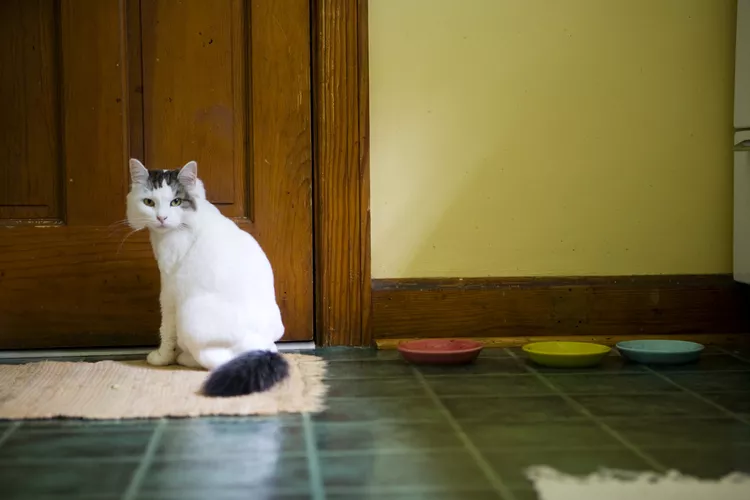
Litter-trained cats may be trained to do their business in the litterbox, but if your cat is pooping outside the box and on your rug, that's a sign of inappropriate elimination. Litter box problems are among the most common behavioral issues experienced by cat owners, and this frustrating behavior can be difficult for cat owners to manage.
The key to solving the problem is figuring out why your cat is pooping in inappropriate places, like your nicest rug. Find out why cats could be prone to defecating on rugs and how to resolve the behavioral issue.
Out of all the places in a home, it seems that rugs are popular targets for inappropriate elimination. There's something about the fabric that attracts cats. Perhaps it's the fact that rugs are easy to knead and paw at like litter, or maybe it's the scent. Absorbancy is likely a factor as well. You may never know for sure why your cat seems to prefer the rug, but many cat owners report this same issue.
Cats are often mysterious, so getting to the bottom of the problem will take careful observation. You'll need to eliminate the potential causes one at a time.
No matter where your cat is pooping, if it's outside the litter box, there are a few possible explanations for it.
Before you assume inappropriate elimination is a behavior problem, it's important to have your cat's health evaluated. During the checkup, your vet will talk to you about your cat's behavior and ask if there are any other signs, such as vomiting, diarrhea, change in appetite, or lethargy. The vet will thoroughly examine your cat for signs of a health problem. Lab tests and/or radiographs (X-rays) may be recommended as well.
Something as simple as constipation may cause a cat to defecate on a rug or in another inappropriate spot. For example, your backed-up cat suddenly has the urge to relieve himself, but he might not be able to get to the litter box in time.
Pain or discomfort may also account for inappropriate pooping. Maybe your cat has trouble getting in and out of the litter box and waits to defecate until he can't hold it anymore. Perhaps the posture the cat finds most comfortable is easier to achieve on the living room rug. Your vet may discover a condition such as arthritis and offer a treatment that makes your cat more comfortable.
Be aware that older cats may develop dementia. This can affect your cat's habits and even cause him to "forget" years of training. Your vet may be able to recommend medications or supplements to help in this situation too.
Once you've ruled out a health problem, it's time to consider behavioral causes. There are a few reasons your cat's habits may suddenly have changed.
It's difficult to break the habit once your cat has started pooping outside the litter box. There are several steps you'll need to take to break this bad habit and you'll need to keep up with your cat religiously to stop this behavior.
Start by making sure to thoroughly clean the areas where your cat has pooped. If you're unable to get the area clean enough, your cat will continue to be attracted to the spot. Launder any items that can go in the washing machine. If your cat has pooped on a bathmat or inexpensive rug, you might just need to get rid of the item. For best results, use a high-quality enzymatic cleaner for pet messes.
Cats want to use ultra-clean litter boxes and tend to prefer roomy, open boxes. Try switching to jumbo litter boxes without covers. You can even consider turning a large plastic under-the-bed storage box into a king-sized makeshift litter box. If you only have one litter box, add a second one in a different area. Consider putting the second box near the place where your cat has been pooping inappropriately. If you have multiple cats, you may need to add even more litter boxes. A good general rule of thumb is that there should be one more litter box in the house than there are cats. There should also be litter boxes on every floor of the home.
If you're using scented litter, switch to unscented right away. While humans may prefer the scented litter to cover up odors, many cats find artificial scents overwhelming and repulsive. Remember that your cat has a much more sensitive nose than you do. Your cat may also dislike the texture of the litter. Use a new type of litter in the second box and see if your cat prefers it. Consider the size of the litter particles as well as whether the litter is clumping or non-clumping. You can also consider a litter specially designed to appeal to cats, like Dr. Elsey's Cat Attract.
Your cat may need a refresher course in litter box training, particularly if the cat is young or was recently adopted.
If there are a couple of specific places where your cat tries to poop, attempt to make these areas as unattractive as possible. Lay down aluminum foil or double-sided tape until your cat stops trying to approach these areas. Do your best to make the litter box the most appealing option.
If there's a new cat in the house, make sure you properly introduce the two of them. If it's another animal or even a human, you may need to gradually desensitize your cat to the source of the stress. Make sure your cat has a safe place to retreat when needed. Also, be sure there's enough space so that the food bowl and the litter box aren't next to each other.
Learn about feline enrichment to make your cat's world more fulfilling. Consider adding vertical space, like a cat tree or wall shelves to give your cat more places to go. Try leaving interactive toys around when you are out. Play with your cat as often as possible. A frustrated, bored cat is much more likely to act out.
Change won't happen overnight, so don't stress out. Just work hard to clean the soiled areas, keep the litter box clean and attractive, and maintain a happy and fun environment for your cat.
If things aren't improving and you're at your limit, don't give up. Ask your vet for a referral to a veterinary behaviorist or applied animal behaviorist. It will be worth the investment to have an expert weigh in.

Exploring the Different Types of Pet-Friendly Beaches
Are you looking for pet-friendly beaches? Learn about the different types of pet-friendly beaches, their locations, and tips for visiting them with your pet.
Exploring Pet-Friendly Wineries: Types, Locations, and More
Discover the different types of pet-friendly wineries, where to find them, and what to expect when you visit. Learn more with The Spruce Pets.
Why Is My Dog’s Eye Swollen?
If your dog's eye is swollen, she may need veterinary attention. The inflammation could be caused by allergies, an injury, or even a tumor.
Can Dogs Eat Corn on the Cob?
Dogs love chewing on corn cobs, but this can cause serious harm. Learn about the dangers of corn cobs and find out what to do if your dog eats one.
Can Dogs Eat Papaya? What to Know About Sharing This Tropical Fruit With Your Pup
Papaya is safe for dogs in moderation, and it can even provide some nutritional value for them. However, too much can cause digestive upset, and it's not suitable to share with dogs with certain health conditions.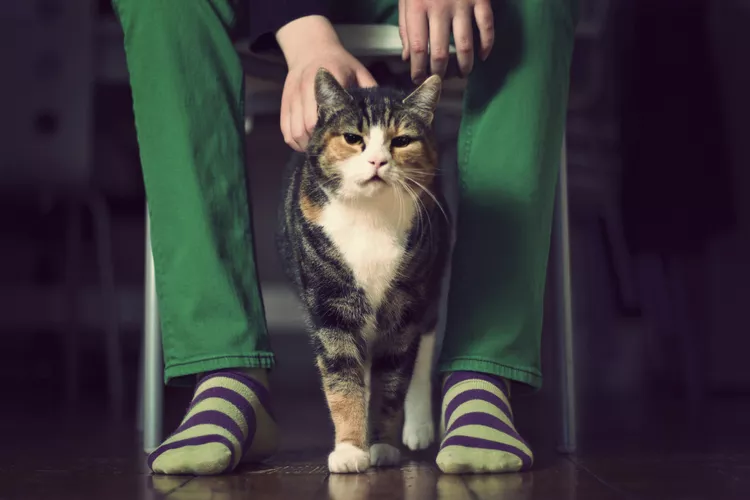
65 Irish Cat Names
Irish cat names can pay homage to historical places, local cuisine, famous Irish actors and musicians, or other wonderful aspects of the Emerald Isle.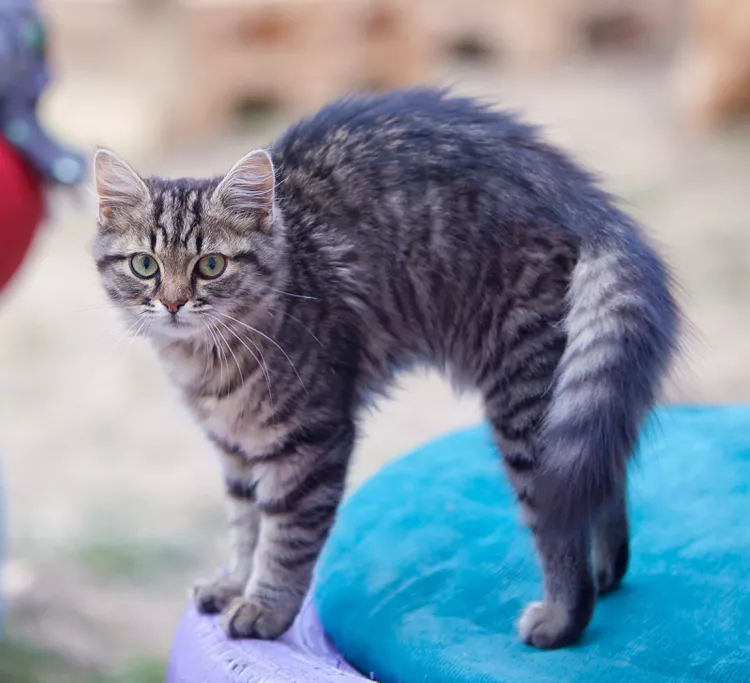
Feline Hyperesthesia Syndrome (FHS) in Cats
Rippling skin is more than dermal sensitivity in cats. It can be a sign of Feline Hyperesthesia Syndrome. Learn the causes, treatment, and prevention.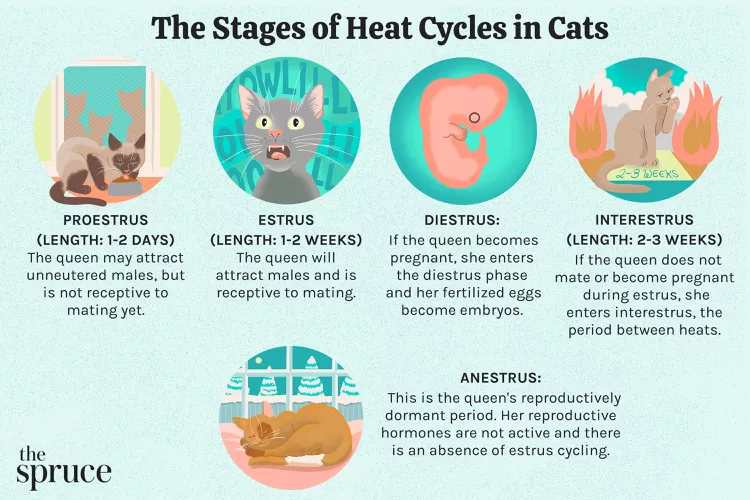
How Long Are Cats in Heat?
How long are cats in heat? Learn about the heat cycles of cats, also called estrus, as well as the reasons you should spay your cat.
Can Dogs Eat Raw Chicken Feet?
What are the potential health benefits of chicken feet for dogs? What are the risks?
Is Eucalyptus Safe for Cats?
Many products containing eucalyptus are not safe for cats, and it is important to be aware of the risks to your cat.
What You Need to Know About Homemade Cat Food
If you want to cook for your cat, make sure to read about the risks associated with homemade diets for cats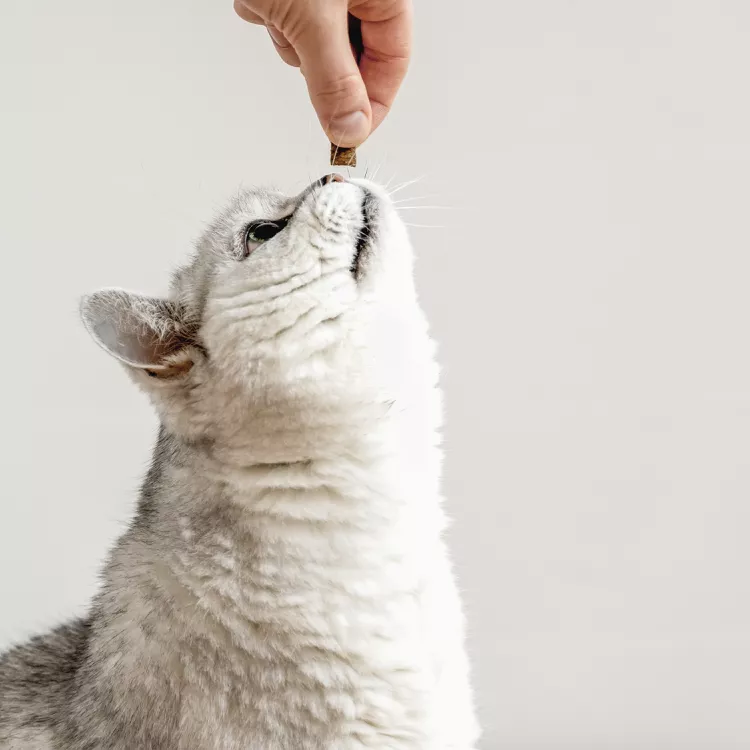
Can Cats Eat Peanut Butter?
Peanut butter is not toxic to cats, but it might not be the best choice of treat for them.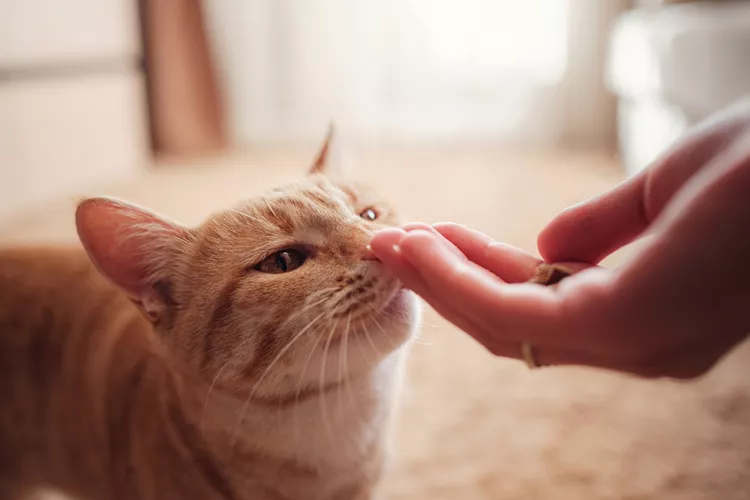
Can Cats Eat Cheese?
Can cats eat cheese? Is it healthy for them? How much can they eat and what should you do if you fear your cat has eaten too much cheese?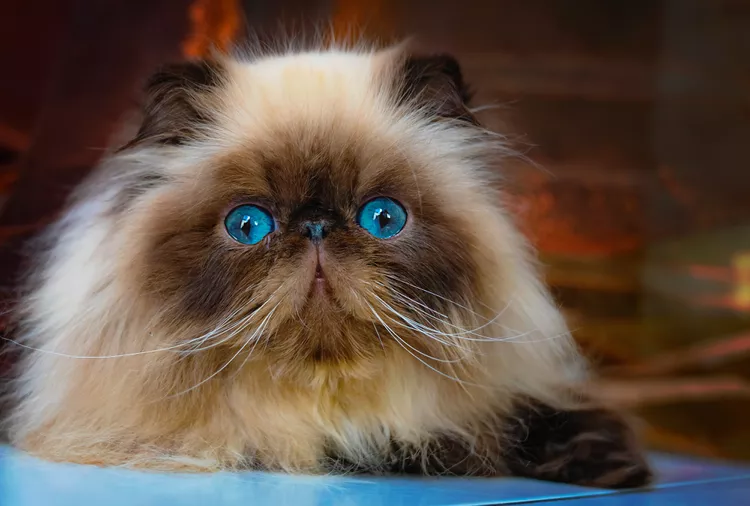
8 Flat-Faced Cats with the Cutest Smooshed Faces
These flat-faced cat breeds have a distinct and adorable appearance. Learn about their origins and traits, and the potential health risks tied to their unique facial structures.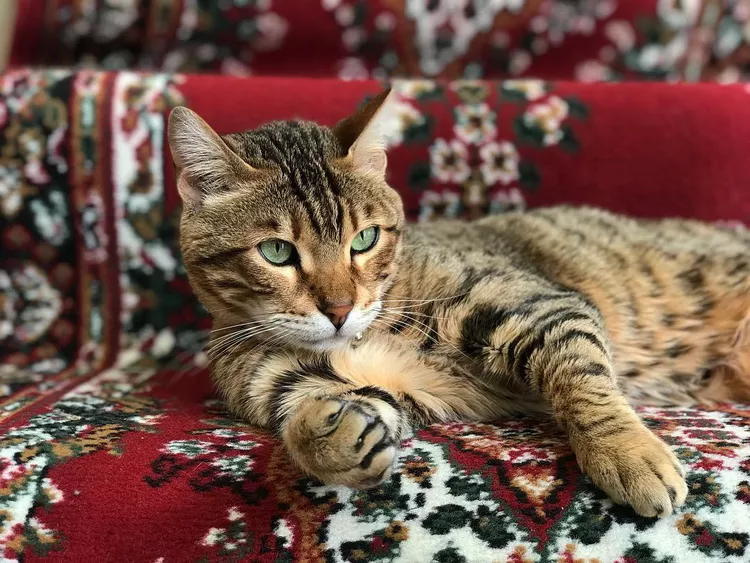
Pictures and Facts About Bengal Cats and Kittens
Bengal cats are a cross between wild cats and domestic cats. Learn more about what they look like and pictures of this beautiful spotted breed.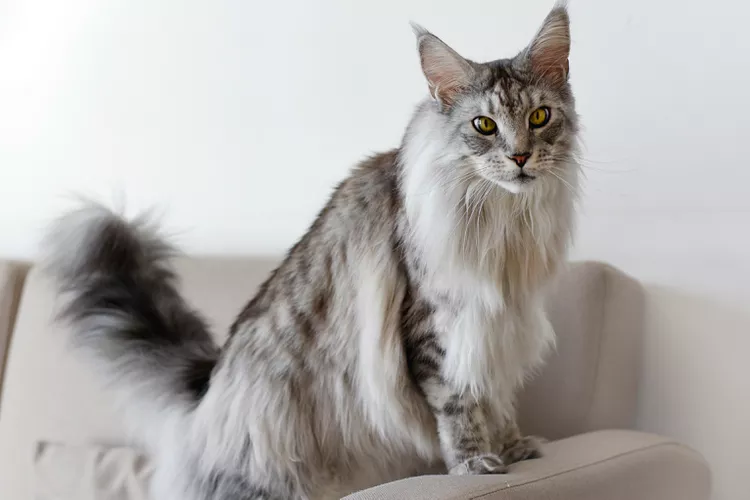
Top 10 Big House Cats
Larger cat breeds, like Maine coons and savannahs, deserve just as much love as their petite counterparts. These big house cats tip the scales.
Cairn Terrier: Dog Breed Characteristics & Care
The cairn terrier is a spunky, affectionate, and intelligent dog from Scotland. The breed became famous when one played Toto in The Wizard of Oz. Learn about the temperament, history, health, and care needs of the cairn terrier dog breed.
Reasons Why Dogs Grind Their Teeth
Some dogs grind their teeth. Learn why dogs grind their teeth and if it can be harmful. Find out what to do about teeth grinding in dogs.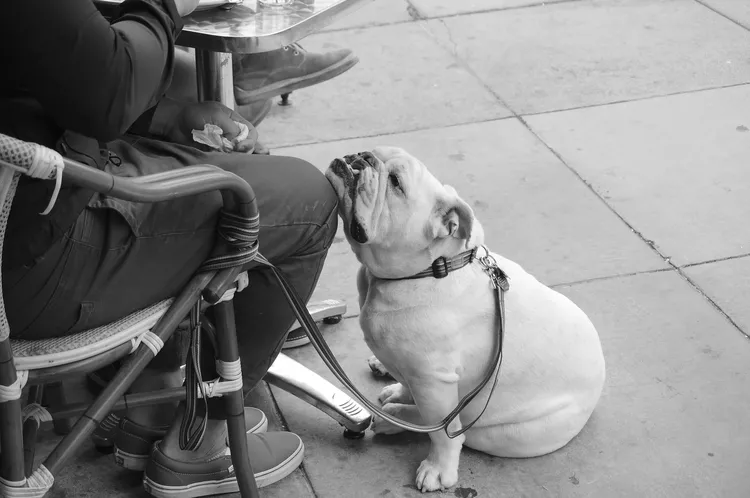
This Is Why Some Dogs Lean on People
Certain dogs really love leaning on their humans. What does this mean? Find out why dogs lean on people and if this is ever a problem.
Can Dogs Get Depression? How to Help Your Sad Dog
Can dogs get depression? Learn about the signs of depression in dogs and find out how to help your sad dog.